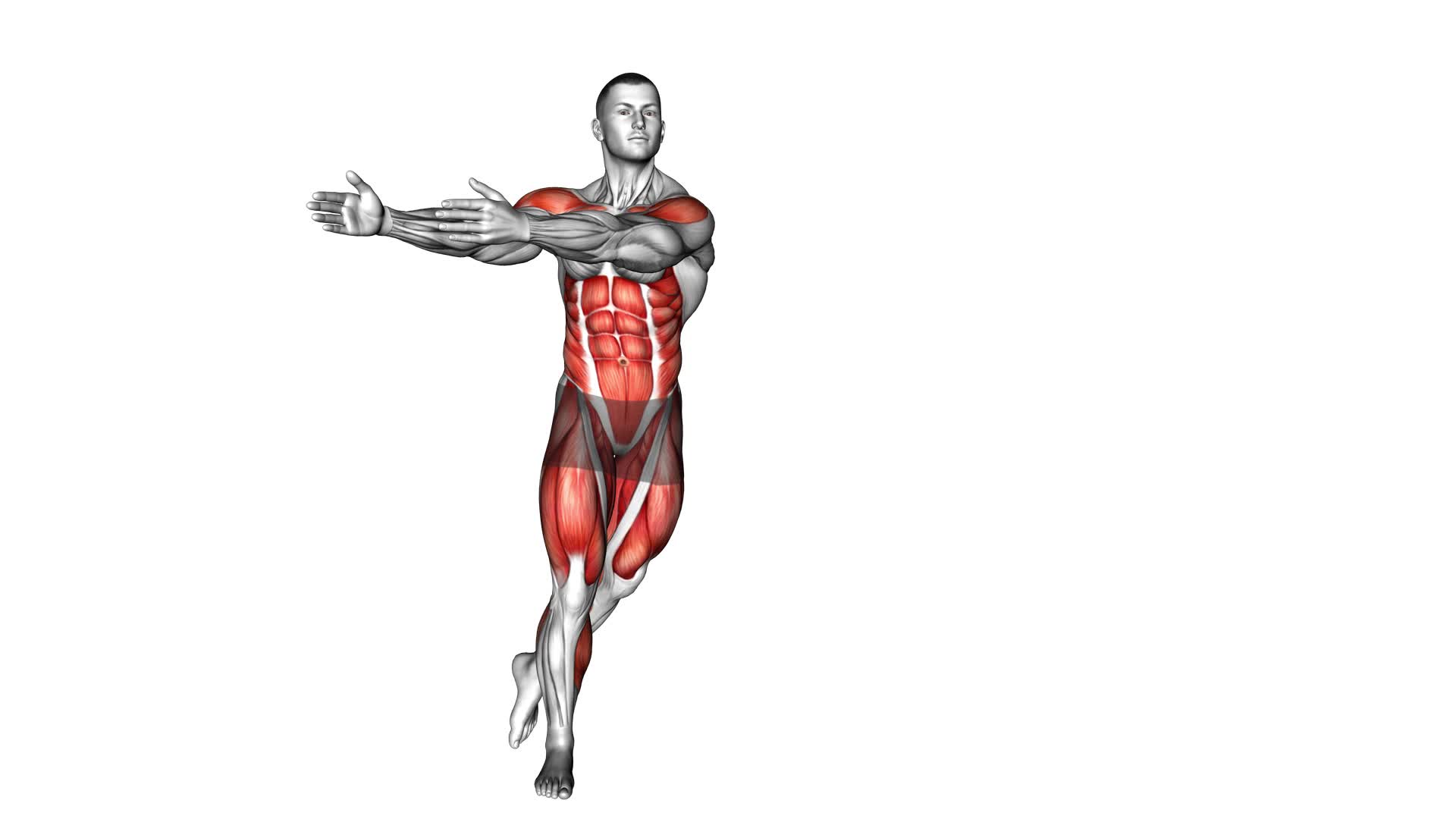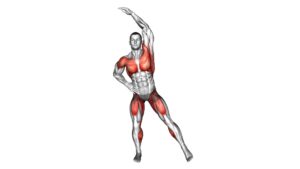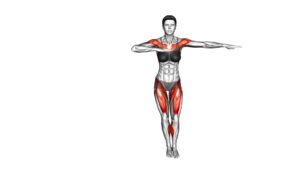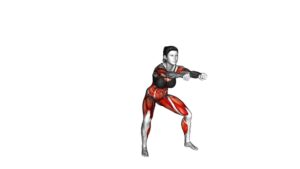Side Step Swing – Video Exercise Guide & Tips

Are you looking for a new exercise to add to your routine? Look no further than the Side Step Swing!
Watch This Exercise Video
This video exercise guide and tips article will show you the proper form and technique to get the most out of this dynamic movement.
With variations and modifications to suit any fitness level, you can easily maximize your workout.
Get ready to add some fun and effective moves to your fitness arsenal with the Side Step Swing!
Key Takeaways
- The Side Step Swing improves balance by engaging core and stabilizer muscles.
- It targets inner thigh muscles for toning and strengthening.
- It enhances overall leg strength and stability, which is important for activities like walking and running.
- The Side Step Swing helps maintain and improve balance as you age.
Benefits of the Side Step Swing
The side step swing offers a variety of benefits for your lower body strength and coordination. One of the key benefits is improving balance. When you perform the side step swing, you're engaging your core and stabilizer muscles, which helps to enhance your balance. This is particularly important as we age, as balance tends to decline over time. By incorporating the side step swing into your exercise routine, you can work on maintaining and improving your balance.
Additionally, the side step swing targets your inner thigh muscles. As you step to the side and swing your leg, you're specifically engaging the muscles in your inner thighs. This can help to tone and strengthen these muscles, giving you better overall leg strength and stability. Strong inner thigh muscles are important for activities such as walking, running, and even everyday movements like getting in and out of a chair.
Proper Form and Technique
To ensure proper form and technique for the side step swing, it's important to focus on maintaining a stable core and engaging your inner thigh muscles as you step to the side and swing your leg. This exercise can be highly effective for targeting the inner thighs and improving overall lower body strength. However, it's crucial to be aware of common mistakes and potential injuries that can occur if proper form isn't maintained.
One common mistake is failing to engage the core muscles during the movement. This can lead to a lack of stability and increase the risk of injury. To avoid this, make sure to keep your abdominal muscles contracted throughout the exercise.
Another mistake is letting the knees collapse inward as you step to the side. This can put excessive stress on the knee joint and increase the chances of experiencing knee pain or injury. To prevent this, focus on keeping your knees in line with your toes as you move.
It is also important to avoid swinging the leg too forcefully or using momentum to complete the exercise. This can compromise the effectiveness of the movement and increase the risk of straining the muscles or joints.
Variations and Modifications
To add variety and adapt the side step swing exercise to fit your specific needs and goals, you can explore different variations and modifications. Here are some options to consider:
- Weighted Side Step Swing: Hold a dumbbell or kettlebell in your hands while performing the side step swing. This adds resistance and challenges your muscles even more.
- Lateral Band Side Step Swing: Attach a resistance band around your ankles and perform the side step swing. The band adds resistance and targets your outer thigh muscles.
- Single Leg Side Step Swing: Perform the side step swing while balancing on one leg. This variation engages your core and improves balance and stability.
- Medicine Ball Side Step Swing: Hold a medicine ball in your hands while performing the side step swing. This adds an additional challenge to your upper body and core muscles.
Remember to start with lighter weights or resistance bands and gradually increase as you become more comfortable with each variation.
These modifications allow you to target specific muscles, increase difficulty, and keep your workouts interesting. Experiment with different variations and find the ones that work best for you.
Tips for Maximizing Your Workout
For maximum results during your workout, try incorporating these tips into your side step swing routine.
Staying motivated is key to getting the most out of your exercise session. One way to stay motivated is to set specific goals for yourself. Whether it's increasing the number of repetitions or improving your form, having a clear objective can help you stay focused and driven.
Another tip is to vary your routine to keep things interesting. Doing the same exercises day after day can lead to boredom and lack of motivation. By adding new exercises or trying different variations of the side step swing, you can challenge your body and keep your workouts fresh.
Avoiding common workout mistakes is also crucial for maximizing your workout. One common mistake isn't using proper form. It's important to perform the side step swing with the correct technique to target the right muscles and prevent injury.
Another mistake isn't challenging yourself enough. If you find that your workouts have become too easy, it may be time to increase the intensity by adding resistance or increasing the speed of your movements.
Lastly, don't forget to take rest days. Overtraining can lead to burnout and decreased performance. Rest and recovery are essential for allowing your muscles to repair and grow stronger.
Sample Side Step Swing Workout Routine
To begin your sample side step swing workout routine, start by warming up your body with some light cardio exercises. This will help increase your heart rate and prepare your muscles for the upcoming workout.
After warming up, you can start incorporating the side step swing into your routine. Here are some modifications and benefits to keep in mind:
- Side step swing modifications:
- Increase the intensity by using a resistance band around your ankles.
- Incorporate hand weights to engage your upper body muscles.
- Perform the exercise on an unstable surface, like a balance board, to challenge your core stability.
- Add a jump at the end of each side step swing for an extra cardiovascular challenge.
- Side step swing benefits:
- Targets the muscles in your lower body, including your glutes, quadriceps, and hamstrings.
- Helps improve your balance and coordination.
- Increases your cardiovascular endurance.
- Can be easily modified to suit your fitness level and goals.
Remember to always listen to your body and modify the exercise as needed. Incorporate the side step swing into your workout routine to add variety and challenge to your lower body workouts.
Frequently Asked Questions
How Many Calories Does the Side Step Swing Burn?
The side step swing is a great exercise for burning calories. It's a dynamic movement that engages multiple muscle groups, helping you to torch those calories. The exact number of calories burned will vary depending on factors such as your weight, intensity, and duration of the exercise. However, on average, this exercise can burn around 200-300 calories per hour.
If you're a beginner, don't worry! There are modifications available to make it more manageable for you.
Can the Side Step Swing Be Done by Beginners?
Yes, the side step swing can be done by beginners. It's a great exercise for building strength and improving cardiovascular fitness. To make it more beginner-friendly, you can start with smaller steps and gradually increase the intensity as you get more comfortable.
Remember to maintain proper form throughout the exercise by keeping your core engaged and your back straight.
With practice and proper modifications, the side step swing can be a beneficial workout for beginners.
Is the Side Step Swing Suitable for People With Knee Injuries?
The side step swing is a great exercise for people with knee injuries. It can be modified to suit your needs and help with knee rehabilitation. By taking smaller steps and using lighter weights, you can still get the benefits of this exercise without putting too much strain on your knees.
It's important to listen to your body and not push yourself too hard. Always consult with a medical professional before starting any new exercise program.
How Long Should Each Set of Side Step Swings Last?
When doing side step swings, it's important to focus on the ideal duration for each set. To maximize the benefits of this exercise, aim for sets that last around 30 seconds to 1 minute.
This will help build strength and endurance in your muscles.
Additionally, make sure to maintain proper form throughout the exercise. This includes keeping your knees slightly bent and your core engaged.
Following these guidelines will ensure an effective workout.
Can the Side Step Swing Help With Weight Loss?
The side step swing can definitely help with weight loss. By incorporating side step swing variations into your full body workout routine, you engage multiple muscle groups and increase your heart rate, leading to calorie burn and fat loss.
Side step swings are a great way to add variety to your workouts and target your legs, glutes, and core. So if you're looking to shed some pounds, give the side step swing a try!
Conclusion
In conclusion, the side step swing is a highly effective exercise that targets multiple muscle groups and improves cardiovascular endurance.
By maintaining proper form and technique, you can maximize the benefits of this exercise while reducing the risk of injury.
Adding variations and modifications can further challenge your body and keep your workouts interesting.
Remember to listen to your body and consult with a fitness professional if needed.
Incorporate the side step swing into your workout routine for a fun and effective full-body workout.

Author
Years ago, the spark of my life’s passion ignited in my mind the moment I stepped into the local gym for the first time. The inaugural bead of perspiration, the initial endeavor, the very first surge of endorphins, and a sense of pride that washed over me post-workout marked the beginning of my deep-seated interest in strength sports, fitness, and sports nutrition. This very curiosity blossomed rapidly into a profound fascination, propelling me to earn a Master’s degree in Physical Education from the Academy of Physical Education in Krakow, followed by a Sports Manager diploma from the Jagiellonian University. My journey of growth led me to gain more specialized qualifications, such as being a certified personal trainer with a focus on sports dietetics, a lifeguard, and an instructor for wellness and corrective gymnastics. Theoretical knowledge paired seamlessly with practical experience, reinforcing my belief that the transformation of individuals under my guidance was also a reflection of my personal growth. This belief holds true even today. Each day, I strive to push the boundaries and explore new realms. These realms gently elevate me to greater heights. The unique combination of passion for my field and the continuous quest for growth fuels my drive to break new ground.







